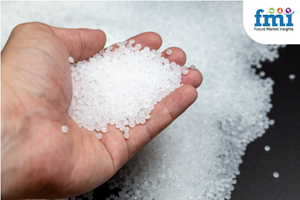Lower Prices for PP, PS, PE, PET; Flat for PVC
Low feedstock prices, higher supplier inventories and slowed demand in most cases are key drivers.
With ‘starring roles’ for PP and PS, prices of commodity resins were lower starting in 2019, with the exception of PVC, which stayed flat. For this month, and possibly February, resin prices of PE, PP, PS, PVC, and PET are generally projected to be flat. Driving the trend were continued lower feedstock prices globally, starting with crude oil, and globally higher supplier inventories, with lackluster seasonal demand.
Here is a look at how things were being viewed as we approached mid-January from purchasing consultants at Resin Technology, Inc. (RTi), Fort Worth, Texas; senior editors from Houston-based PetroChemWire (PCW); and CEO Michael Greenberg of the Plastics Exchange in Chicago.
● PE: Prices appear to have dropped 3¢/lb in December, following a similar drop in November. Marching into 2019, PE suppliers were out with increases ranging from 3-6¢, effective January 1, and additional increases of 3-4¢ for this month, depending on the supplier.
Both Mike Burns, RTi’s v.p. of PE markets and PCW senior editor David Barry maintained that there were no drivers to support any price increase. Contributing factors included lower feedstock prices globally, led by falling oil prices, and healthy PE inventories globally. Burns noted that domestic inventories continue to exceed strong U.S. demand. Also, while exports were very robust ending 2018, a slowdown was expected from Asia due to economic issues and Chinese New Year, so that market conditions were likely to be uncertain till past mid-February.
Barring either a major disruption in production or oil prices spiking up, RTi’s Burns ventured relative stability for PE prices through first quarter, at least, if not for most of the year. PCW’s Barry noted that only a big uptick in oil pricing would support an increase. He ventured domestic demand would be strong in January, partly due to some restocking and suppliers’ push for increases. He saw the downward pressure on PE as having played out and ventured a scenario of flat to possibly upward pricing in the first quarter. Both sources noted that 2018 ended with domestic PE supplies up by more than a 1 billion lb following major new capacity being brought on stream. Meanwhile, Sasol was in the process of starting up its new 1 billion lb/yr LLDPE unit in Lake Charles, LA. The main products of that unit are expected to be conventional LLDPE hexene—which has been the most oversupplied—and mLLDPE, according to Barry.
Commenting on the culmination of 2018 PE pricing trends and the spot market, The Plastic Exchange’s Greenberg reported, “In general, the need to export the vast majority of the new polyethylene production in the face of Chinese tariffs and falling oil prices, required sharp discounts and consequently, we saw the Houston/export discount vs. higher domestic prices grow to perhaps unprecedented levels.”
● PP: Prices dropped by another 8¢ in December in step with propylene monomer contract prices, for a total decline of 18¢/lb in the last two months of 2018. This with no sign of the 3¢/lb profit margin increase attempted by suppliers. Noted PCW’s Barry, “It’s hard to justify that kind of margin increase with monomer down to 42¢/lb and spot PP homopolymer at 54-57¢/lb.” Prices in the first month of the year were likely to be flat or down by another 1-2¢ if monomer prices were to slip a bit further, according to Scott Newell, RTi’s v.p. of PP markets. This driven by both high volumes of monomer and slowed demand.
Meanwhile, TPE’s Greenberg reported that spot PP availability was sporadic, with spot prices dropping a lot less than contract prices. “Those with inventory on hand (resin sellers) have commanded and generally received most of the premiums they have sought.”
These industry sources generally saw a ‘stable dynamic’ at least for January. Newell ventured more stable pricing for the next couple of months, adding that a lot will depend on PP demand and to what extent the monomer excess would be reduced with planned maintenance shutdowns in late first quarter. Going into 2019, domestic monomer prices were the lowest in the world, while PP prices had dropped to about equivalent with European PP prices yet about 10-15¢/lb higher than Chinese PP. Newell also noted that while PP imports were at record highs for fourth quarter 2018, he expected imports to dwindle down through first quarter.
● PS: Prices dropped 7¢/lb in December, and additional price concessions on the order of 3-5¢/lb were expected by both Robin Chesshier, RTi’s v.p. of PE, PS and nylon 6 markets, and PCW’s Barry. Falling benzene contract prices were the key driver, with January contracts settling down by another 27¢, to $1.83/gal. Lower butadiene and styrene monomer prices, along with seasonally slowed demand also contributed.
Still, both these industry sources saw a somewhat different scenario shaping up as early as this month, based on a rebound of benzene prices depending on both the oil price trajectory and the fact that benzene is perceived as being about 50¢ underpriced, noted Barry. He added that it was February 2017 when we last saw a major increase in PS prices—up 8¢—driven by a sharp upswing in oil/benzene prices.
Chesshier ventured PS prices this month would be flat to slightly up. Barry reported at 2018’s end that spot prime general-purpose PS was assessed at 76-78¢—10¢/lb lower from 2017—while spot prime HIPS was at 81-83 ¢/lb; down 12¢lb in that same time span.
● PVC: Prices rolled over in December as they had in November, despite suppliers attempts to push through a 2¢/lb increase—a move that both Mark Kallman, RTi’s v.p. of PVC and engineering resin markets, and PCW senior editor Donna Todd had ventured had little chance of implementation.
Both sources cited lower feedstock prices and seasonally low demand and expected these drivers to factor into continued flat pricing in January and potentially this month. Late-settling December ethylene contract prices were a rollover from November, and supplies appeared to be in good shape.
Kallman ventured fairly flat pricing for PVC in first quarter, barring any unplanned production outages or increases in oil prices and/or demand. He noted that following planned maintenance outages late last year, PVC suppliers were likely ramp up utilization rates to the mid-80s to rebuild some inventory. Todd reported that in the past, January PVC price hikes (and the pipe price increases that inevitably follow) have not racked up a good track record of success.
● PET: Prices for domestic bottle-grade PET entering 2019 were in the mid-60 ¢/lb range—down from the wide spread range of 68-75 ¢/lb in early December 2018. For one, demand is down based on typical seasonal factors. PET imports from more than 50 countries are available to domestic buyers for delivery to the West Coast, East Coast, Gulf Coast and the Great Lakes regions for inland delivery to Midwest PET bottle, container and packaging manufacturers, according to PCW senior editor Xavier Cronin.
One PET resin distributor expected a potential “bounce” in PET prices last month noting that some bloated supplier inventories were reduced in December for end-of-year book-squaring and other business reasons. Still, Cronin ventured that January PET prices would remain flat or possibly fall a couple of cents. As for this month, he ventured prices should meander around 65¢/lb barring supply disruption due to logistical issues like bad weather creating delivery problems for truckload and bulk truck (48,000 lb) deliveries.
Related Content
Plastic Compounding Market to Outpace Metal & Alloy Market Growth
Study shows the plastic compounding process is being used to boost electrical properties and UV resistance while custom compounding is increasingly being used to achieve high-performance in plastic-based goods.
Read MoreNeste, Borealis and Covestro Plan to Make Polycarbonate From Recycled Tires
Companies announced agreement that will use advanced recycling to convert old tires into new PC-suitable for automotive applications.
Read MoreInjection Molded Enclosures Plug into Potential Electric Vehicle Battery Applications
In partnership with material suppliers, Engel is proving out injection molded thermoplastic-based concepts for electric vehicle battery housings, utilizing production tools and dedicated machines at its large press factory in St. Valentin, Austria.
Read MoreCelanese to ‘Shine’ at CES 2023 with Expanded Portfolio of Materials
With it acquisition of DuPont’s engineering resins, Celanese’s resin solutions for automotive electrification, e-mobility and consumer electronics are plentiful.
Read MoreRead Next
Making the Circular Economy a Reality
Driven by brand owner demands and new worldwide legislation, the entire supply chain is working toward the shift to circularity, with some evidence the circular economy has already begun.
Read MoreBeyond Prototypes: 8 Ways the Plastics Industry Is Using 3D Printing
Plastics processors are finding applications for 3D printing around the plant and across the supply chain. Here are 8 examples to look for at NPE2024.
Read More























